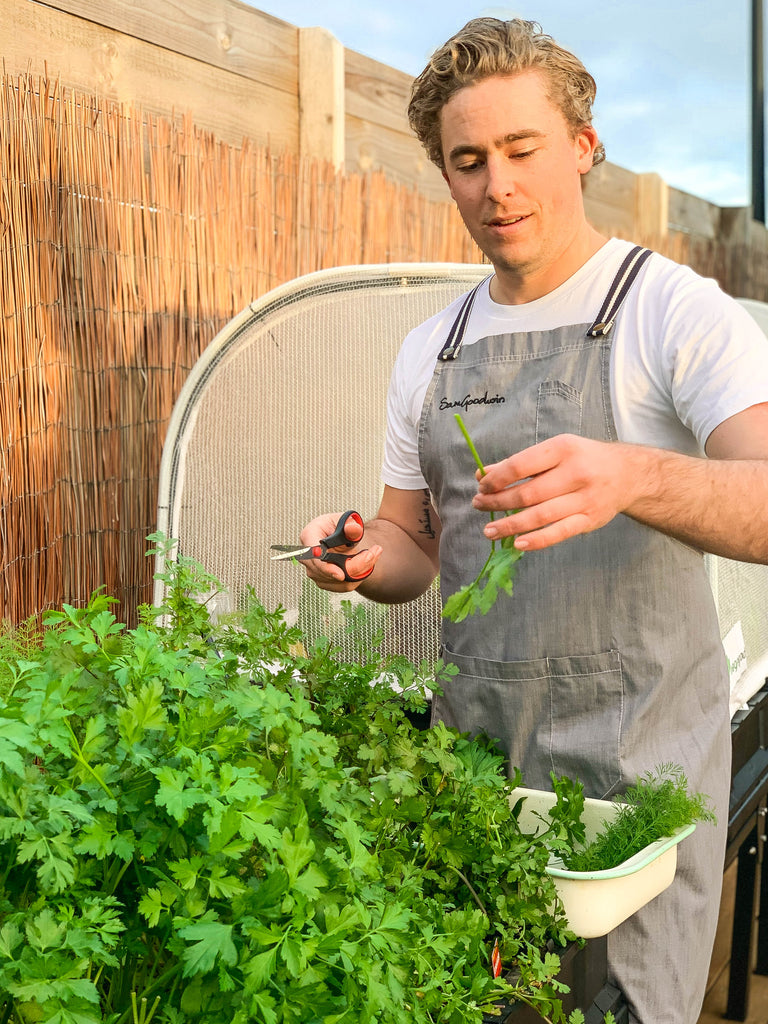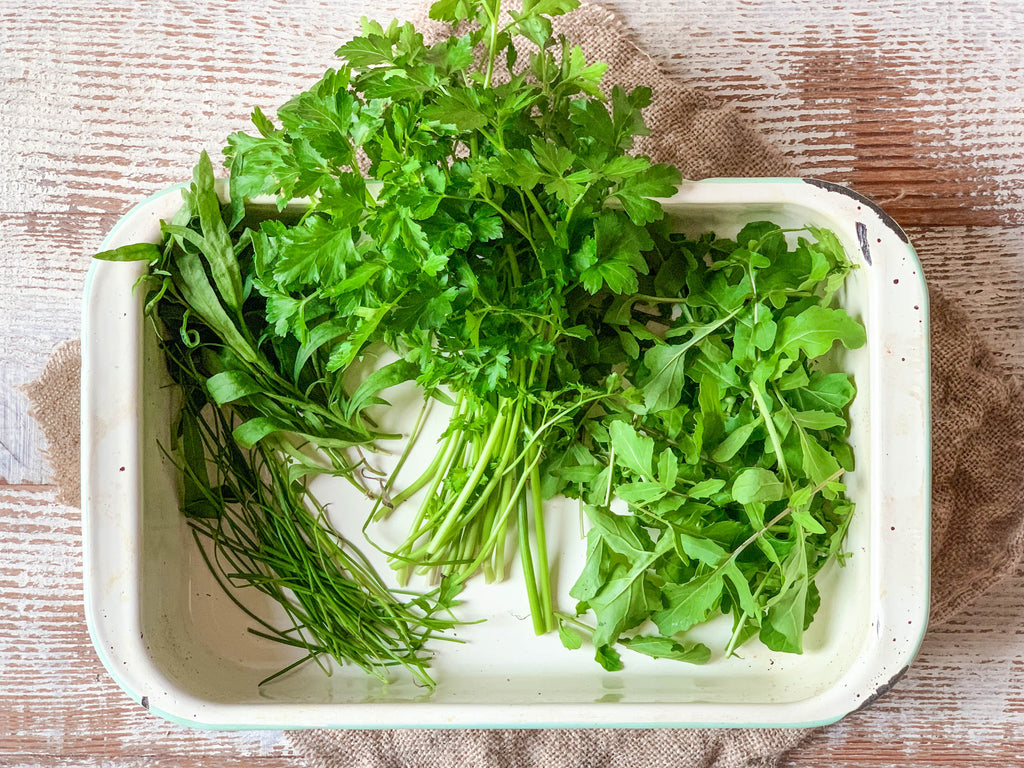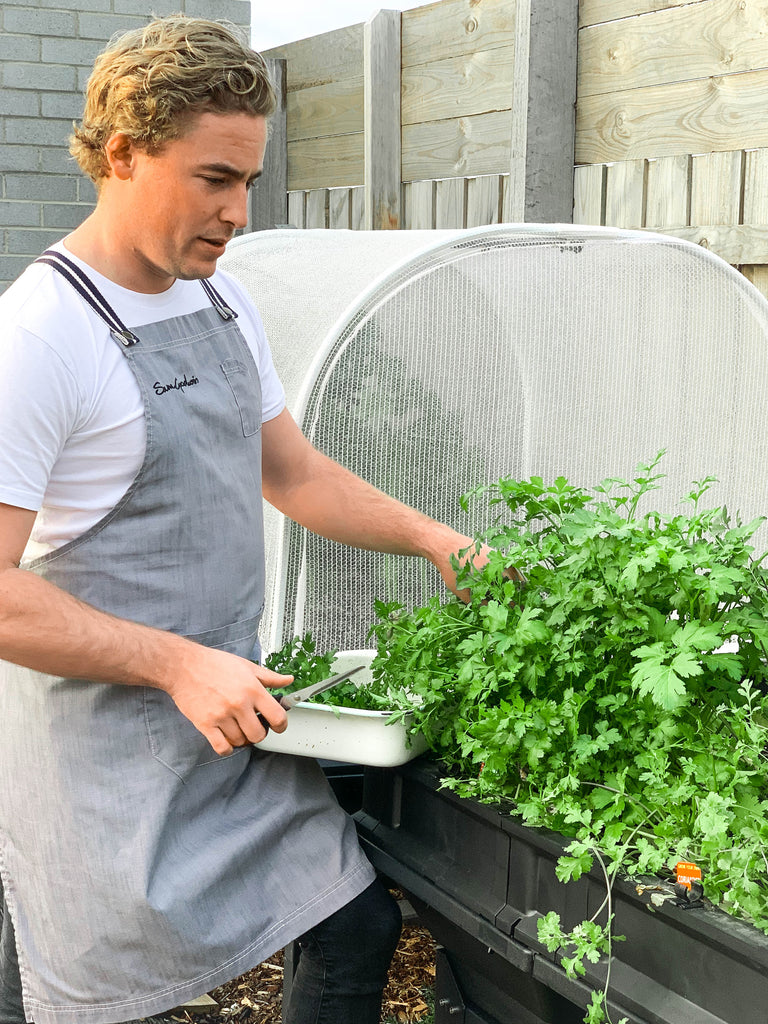Sam Goodwin is back with another killer pod-to-plate recipe that's perfect for springtime. Have a read for excellent tips on growing and storing herbs, and how to use herbs in recipes to create fantastic flavours that enhance your cooking x10.
This blog is all about one thing – herbs. My Vegepod has been a revelation for growing herbs, never have I seen such lush, green and sturdy herb growth; even soft herbs like coriander, which is notoriously fragile to grow, are booming. So, here’s a little segment to get you inspired to grow herbs in your Vegepod and reap the benefits in the kitchen.

I’ve got an entire medium pod dedicated to herbs. It is probably my most important and favourite Vegepod, providing flavour bombs that elevate dishes to the next level. Depending on the size of your backyard or alfresco, small or medium Vegepods are perfect for easy access herbs that can be placed just outside your kitchen or next to the BBQ. Having them right there within arm’s reach whilst cooking allows you to create quick condiments and sauces to compliment any dish.
Here’s a quickfire list of examples of how to use your fresh herbs:
- Cooking steak? You can’t go past an Argentinian style chimichurri using oregano and parsley.
- Fish and chips? Fresh tartar sauce loaded with dill and parsley.
- Nam jim, with a punch of a good punch of coriander, is my go-to Thai style dipping sauce or salad dressing
- The allrounder – Italian style salsa verde using any combination of parsley, basil, or mint, works perfectly whether you’re cooking seafood, chicken, beef or vegetables.
Storing & Preserving

If you’re using any of the above sauces, they will hold in the fridge for 1-2 weeks if they are stored in an airtight container or jar.
Alternatively, a great way to preserve your herbs for months is to freeze them. This is best achieved by blitzing them into an oil (I’d recommend extra-virgin olive oil, or grapeseed if you prefer neutral flavour) and freezing them in ice cube trays. Then, all you need to do is pop them out as you need them & add them into your favourite dish. If you have made an oil-based sauce, such as the chimichurri or salsa verde mentioned above, then these can be frozen in the same manner.
Pesto & Vintage Cheddar Scroll

This recipe uses another method not mentioned above but one you will all be familiar with – pesto. Traditionally, the authentic Pesto Genovese from Italy uses only basil leaves, which is the flavour most people would be familiar with. However, like the sauces above, you can play around with herbs depending on what you have coming out of the Vegepod.
In this instance, I had an abundance of rocket which has quickly become my go-to base for my everyday pesto. Not only is it abundant but I also love the beautiful neutral peppery base that it gives pesto; it provides a great foundation for other additions of herbs and doesn’t overpower other flavours when added to a dish. In this rendition, I have added herbs that were thriving in early winter - parsley, chives, and tarragon.
This scroll is the perfect spring starter to be shared in the middle of the table – pulled apart and served with a bowl of soup or slow cooked casserole.
If you wish to make excess pesto and store for future use, I would recommend substituting butter for more olive oil, as the butter is added to aid workability and enrichen the scroll. Pesto can be stored as per the methods mentioned above.

Thanks Sam for another killer recipe and fantastic chef tips to boot. If you'd like to see more of Sam Goodwin's recipes check out his website: samgoodwin.com.au or find him @samgoodwinau on IG.


היו הראשונים להגיב